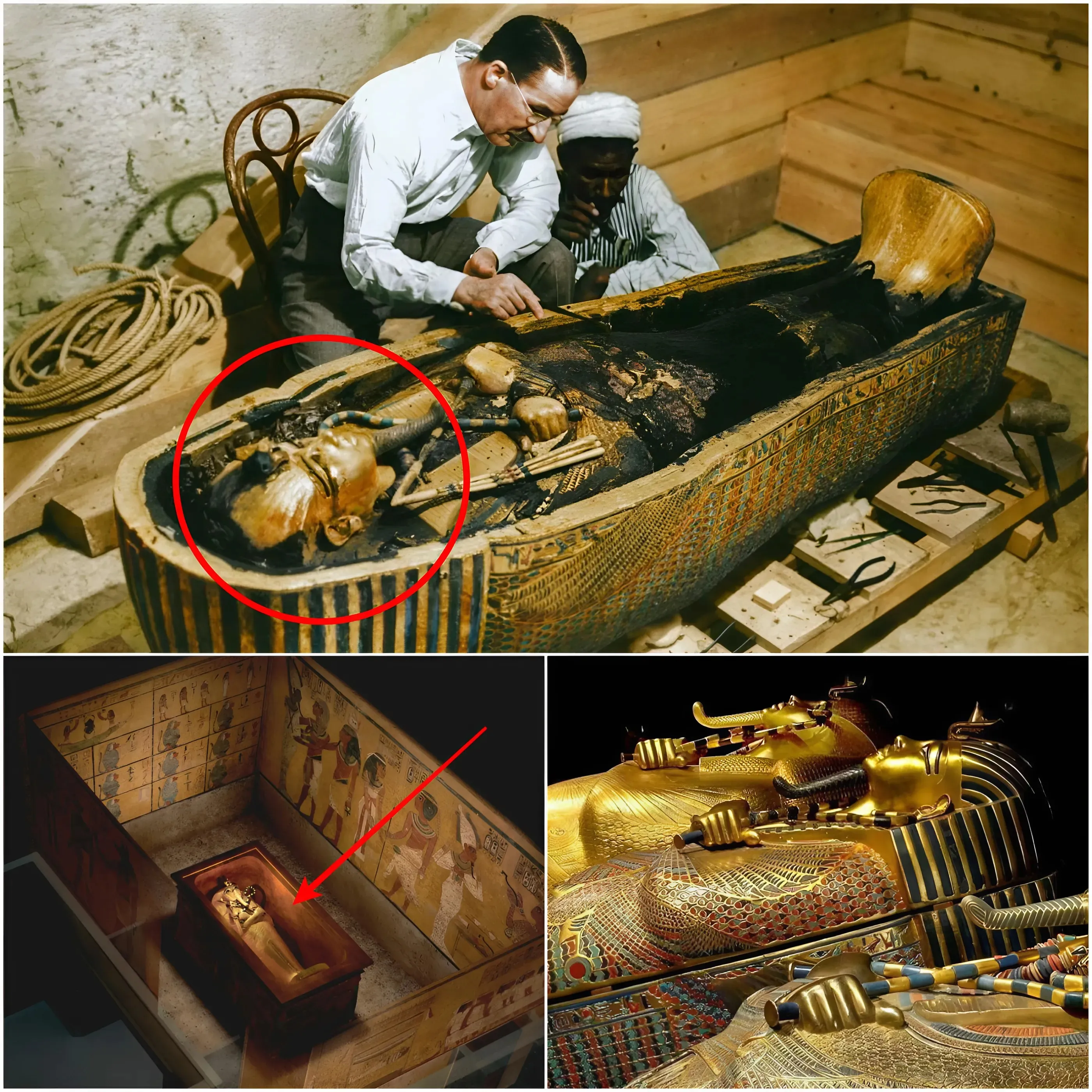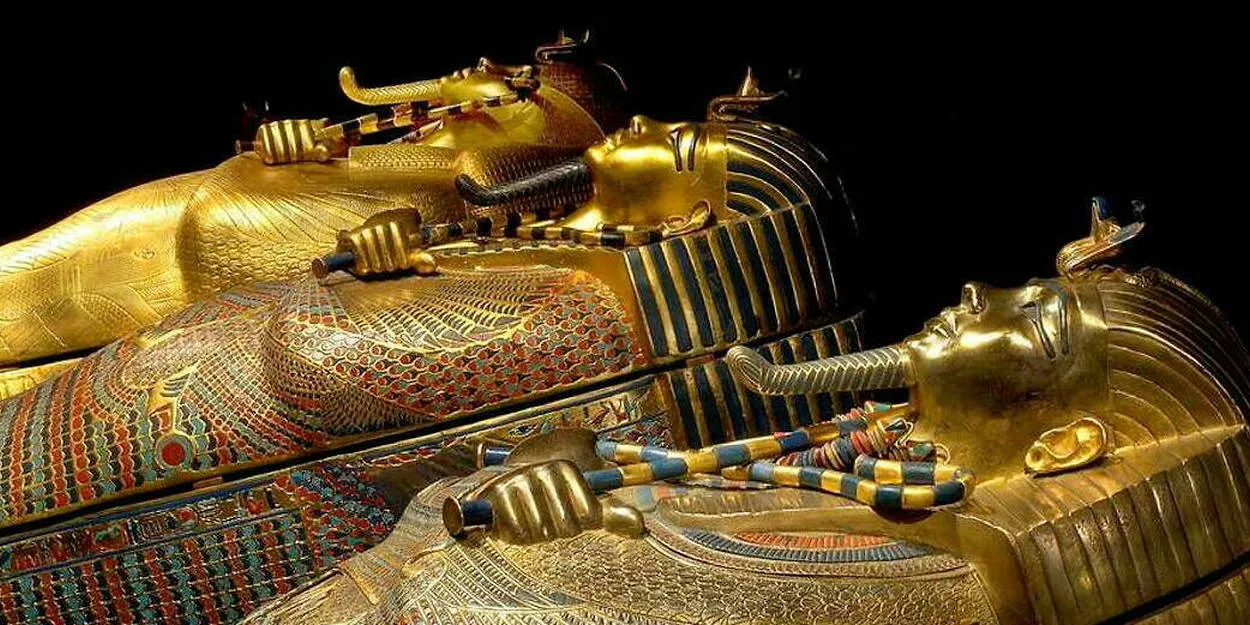In 1925, in the Valley of the Kings, an event shook the world of archaeology and captured the collective imagination: the discovery of the coffin of Tutankhamun, a young pharaoh whose name would become synonymous with mystery and splendor. This moment, tinged with an aura of terror and wonder, has gone down in history as one of the greatest revelations ever made. Inside a tomb sealed for more than three millennia, a treasure of unimaginable richness awaited, protected by time and the burning sands of Egypt. But beyond the gleam of gold, this discovery carried with it an almost supernatural tension, a sense that something ancient and powerful had been disturbed.

The expedition, led by British archaeologist Howard Carter, had begun years earlier, funded by Lord Carnarvon, an aristocrat with a passion for ancient Egypt. After fruitless excavations and dwindling hopes, on November 4, 1922, a staircase leading to a sealed door was unearthed. When Carter drilled a small hole in this door and inserted a candle, he was struck by a vision he later described as “marvelous.” Objects glittered in the darkness: golden statues, chariots, jewel-encrusted chests. But this was only the prelude. The real shock would come later, in 1925, when the coffin itself was revealed in all its terrifying glory.
At the heart of the burial chamber, a gigantic red stone sarcophagus, nearly three meters long and weighing more than a ton, dominated the space. Carved with almost inhuman precision, it seemed to defy anyone who dared desecrate it. Inside, three coffins fit together like Russian dolls, each more sumptuous than the last. The first was made of gilded wood, adorned with intricate designs; the second, even richer, bore inlays of colored glass and gold. But it was the third that captured hearts and minds: a coffin fashioned entirely from solid gold, weighing 110.04 kilograms. This hypnotically beautiful room contained the mummy of the young pharaoh, his face covered by a funerary mask that would become the ultimate icon of ancient Egypt.

The opening of this coffin was a moment of terror as much as of triumph. The team, already exhausted by months of labor in the sweltering heat, felt an inexplicable apprehension. Rumors of a curse were already circulating, amplified by the sudden death of Lord Carnarvon in 1923, shortly after entering the tomb. An infected mosquito bite had claimed the patron, but for many, it was a sign of pharaonic vengeance. When the golden coffin was finally lifted, revealing Tutankhamun’s intact mummy, some swore they heard a sigh in the still air, as if the king’s spirit were protesting the intrusion.
This treasure was not just an artistic feat; it testified to an almost obsessive devotion to the pharaoh. Barely 19 years old at his death, Tutankhamun had reigned only briefly, during a troubled period in Egyptian history. Yet his tomb surpassed those of the greatest rulers in richness. Why? Theories abound. Some believe he was buried in haste, his tomb originally intended for someone else, which would explain its modest location in the Valley of the Kings. Others see this opulence as an act of redemption, an attempt by the priests to restore order after the heretical reign of his predecessor, Akhenaten. In any case, the golden coffin and the thousands of objects that accompanied it—jewelry, weapons, furniture—represented a colossal fortune, perhaps the largest ever discovered.
But the brilliance of this find was quickly overshadowed by a wave of mystery and tragedy. After Carnarvon, other members of the expedition succumbed under strange circumstances: sudden illnesses, inexplicable accidents. Newspapers seized on the idea of a “curse of Tutankhamun,” fueling a morbid fascination. Was it a coincidence, or was an ancient force truly protecting this treasure? Accounts from the time speak of restless nights in the camp, moving shadows near the tomb, and even warnings carved into the burial chamber, although their authenticity remains debated.
For the Egyptians of the time, the unveiling of the coffin was both a source of pride and a desecration. Tutankhamun’s treasures were part of their heritage, but their extraction by foreigners rekindled colonial tensions. Even today, these objects, on display at the Cairo Museum, attract millions of visitors, each seeking to unravel the mystery of this young king. The golden mask, with its lapis lazuli-encrusted eyes and enigmatic smile, seems to defy time, as if it still bore the secrets of a lost world.

Scientifically, the discovery revolutionized our understanding of ancient Egypt. Analyses of the mummy revealed that Tutankhamun suffered from deformities, possibly due to royal inbreeding, and that he died young, likely from infection or injury. The meticulously cataloged tomb objects offered unparalleled insight into art, religion, and daily life during the 18th Dynasty. But for many, the value of this treasure goes beyond historical facts. It embodies a tangible connection to an unfathomable past, a bridge between the modern world and a civilization engulfed by the centuries.
Nearly a century later, the moment Tutankhamun’s golden coffin was unveiled remains etched in our memories as a moment of golden terror. It was not just the discovery of material treasure, but the awakening of a legend that continues to haunt the collective imagination. Between tales of curses and the dazzling glare of gold, Tutankhamun’s story oscillates between fact and myth, a reminder that some truths, however dazzling, remain forever shrouded in mystery.





